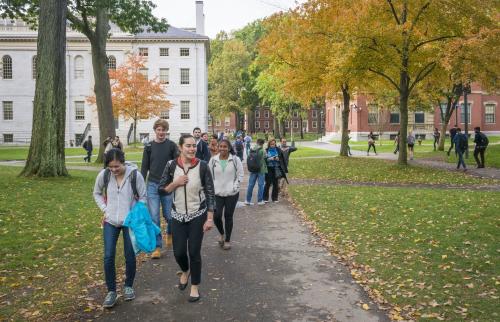Another Chetty-bomb just exploded in the mobility debate. Writing with David Grusky, Maximilian Hell, Nathaniel Hendren, Robert Manduca, and Jimmy Narang, Professor Raj Chetty has just produced a stunning research finding: only half of Americans born in 1980 are economically better off than their parents. This compares to 90 percent of those born in 1940:
This finding is much more pessimistic than earlier measurements of absolute mobility rates typically ranging between 65 percent and 85 percent. As we have shown before, there is a lot of variation in these estimates, largely because of data limitations and sensitivity to statistical assumptions. The new Chetty paper attempts to overcome those limitations by estimating mobility using both Census data and federal tax data. Almost as striking as the headline results is the finding that even for those born on the very bottom rung of the ladder, in the bottom decile, almost one in three (30 percent) are even worse off than their parents, five times as many as for the 1940 cohort (6 percent).
The rustbelt rusts up
There is some variation between states, however. The drops in absolute mobility were highest in much of the Rust Belt—states which helped Trump to his victory. The figure below shows the decline in mobility from the 1940 generation to the 1980 generation in some of the hardest-hit states:
It is hard to overstate how dramatic these findings are. If only one in two Americans are better off, in real terms, than their parents, it is not hyperbole to wonder about the death of the American Dream. But the analysis paper does chime with another important paper released this week by the equally impressive team of Thomas Piketty, Emmanuel Saez, and Gabriel Zucman, showing that market incomes for the bottom fifty percent of earners have remained completely flat over the last half century.
The Chetty analysis provokes a number of potential objections: Wrong deflator! Wrong definition of income! Wrong household size adjustment! And so on. All reasonable concerns. But the team of scholars have anticipated them, and produced reasonable answers. They also demonstrate that the basic result is unchanged even under a wide range of assumptions. For example, even adding $10,000 dollars to everybody’s current income would push up the absolute mobility rate to just 61 percent, still far below the 90 percent for the 1940 cohort.
Income inequality is driving down absolute mobility more than slow growth
There are two possible factors for the decline in mobility: slower overall economic growth or greater inequality. Both of these have a role to play, but the findings suggest that rising inequality explains the lion’s share of the decline in mobility. Chetty and team construct two counterfactual worlds: one in which total economic growth between 1980 and the present continued at the same rate of the previous forty years, and another in which the income distribution was the same between 1980 and today as it was mid-century. In the “high-growth” counterfactual, absolute mobility rates would be 62 percent, 12 percentage points higher than they are today. In the “more equal” counterfactual, absolute mobility rates would be 80 percent, 30 percentage points higher than they are today. In that world, three-quarter of the observed decline in economic mobility would be erased. To attain absolute mobility rates above 80 percent with current levels of inequality, annual GDP growth would have to be running at more than 6 percent, a level that the US economy has never sustained for multiple years in the post-World War II era.
Egalitarians who see a connection between inequality and opportunity typically focus on relative mobility, although evidence on the so-called “Gatsby Curve” connecting the two is mixed. But if Chetty and his team are right, we need to worry just as much about the link between inequality and absolute mobility.
The Brookings Institution is committed to quality, independence, and impact.
We are supported by a diverse array of funders. In line with our values and policies, each Brookings publication represents the sole views of its author(s).







Commentary
On the new Chetty-bomb that only half of Americans are better off than their parents
December 8, 2016